Film-goers might remember Fugui (福貴), the main character in Zhang Yimou's (張藝謀) film To Live, (活著) who managed to survive the horror of the war during the 30s and 40s partly due to a small box full of shadow puppets.
In fact, these simple devices, little more than the cured and painted hides of animals put up against a cloth screen have provided the means of telling stories for more than 1,000 years. But in To Live, the same shadow puppets also very nearly brought about Fugui's demise in the 60s during the Cultural Revolution, which saw a wave of destruction sweep away much traditional culture.
The hiatus of shadow puppetry that followed the revolution, may, ironically, have contributed to the enormous international popularity of the Tangshan Shadow Play Theater (唐山市皮影劇團), a mainland troupe that is visiting Taiwan from April 12-25. With its bright, cinematic look, Tangshan looks very different from conventional ideas of shadow puppetry, which has earned its accolades and commissions to perform at venues like Disney World, the center of ultra-modern entertainment.
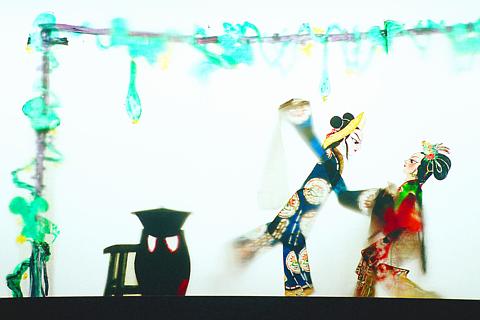
PHOTO: CHIANG YING-YING, TAIPEI TIMES
According to troupe director Wang Jun-jie (王俊杰), this popularity has largely been due to the troupe's willingness to innovate and move with the times.
The thing that strikes the observer immediately with the Tangshan performance is the large size of the screen against which the puppets perform. Compared to the traditional shadow puppet screen, which rarely measured more than two by three meters, Tangshan utilizes a screen the size of that used in a cinema.
The puppets, too, are much larger, sometimes measuring more than a meter in height, and they incorporate many detailed actions, such as movement of the mouth and eyes, that would be impossible with conventional shadow puppets.
All this change makes the mainland troupe's style a marked contrast to Taiwanese troupes. "They are much more traditional," said Xu Shu-shan (徐樹山), manager of the group.
Chiu Yi-feng (邱一峰), a doctoral student at National Cheng-chi University specializing in shadow puppet theater, agreed. He said Taiwan's shadow puppet theater and that of Tangshan had become very different because there was greater continuity with the past in Taiwan, making younger performers reluctant to cast aside the heritage of their elders. In China, he said, the Cultural Revolution had broken many links to the past, giving young performers greater freedom to innovate.
And at the Tangshan Shadow Play Theater that's just what they have been doing. Apart from the larger scale of the whole performance, many other changes have also been made to make the shadow puppets more attractive to a modern audience. They continue to use donkey skin as the main material, a fact that is emphasized by many members of Tangshan City's cultural community. It is something that makes Tangshan puppets distinct from those of other places, where cowhides are the usual materials.
According to the troupe's senior performer, donkey skins have superior flexibility and are more translucent, helping to create a more natural effect during the performance. But in some areas, the old has given way to the new, with the heads of all the puppets now being made from celluloid, allowing features to achieve a more three-dimensional, life-like effect.
In some cases, large animal puppets are completely made of celluloid because of its greater stiffness. Xu believes most of these changes will have little effect upon the fundamentals of the art, because other troupes are preserving the more traditional aspects.
Culture mavens might have mixed feelings about the cartoon-like quality that Tangshan cultivates and its incorporation of shows like Panda Mimi (熊貓咪咪) into the program that used to be the exclusive preserve of classic stories, such as The Cowherd and the Weaver Maid (牛郎織女) and The Monkey King Thrice Defeats the White-Bone Demon (孫悟空三打白骨精).
The recent success of the film The Legend of the Sacred Stone brought out tensions that exist in puppetry circles between those who seek to modernize the puppet theater and those who aim to preserve it in its traditional form. Tangshan clearly stands on the side of the modernizers.
Traditionalists might carp that Tangshan is no longer the real thing, but like Fugui, it is striving to find a place for itself in a rapidly changing world. Survival is the name of the game, and to judge from its reception at puppet festivals around the world, not least in Taiwan, it is doing very well.
Performance Information:
April 12 Chungshan Hall, Taichung
April 13 Yuming Primary School,
Hsinchung City
April 13 Taipei County Cultural
Bureau
April 15 Taoyuan County Cultural
Center
April 18 Chang Kai-shek Cultural
Center, Kaohsiung City
April 23 Chungli Art Gallery
April 24-25 Taiwan Art Education
Institute, Taipei City
All performances begin at 7:30pm.
Ticket prices: NT$200 to NT$800.
For more information, call 2771-5676.
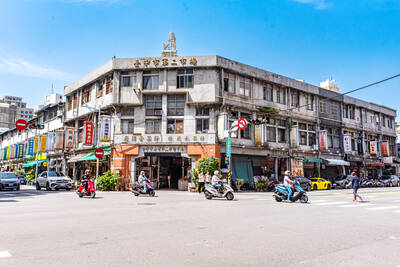
Wooden houses wedged between concrete, crumbling brick facades with roofs gaping to the sky, and tiled art deco buildings down narrow alleyways: Taichung Central District’s (中區) aging architecture reveals both the allure and reality of the old downtown. From Indigenous settlement to capital under Qing Dynasty rule through to Japanese colonization, Taichung’s Central District holds a long and layered history. The bygone beauty of its streets once earned it the nickname “Little Kyoto.” Since the late eighties, however, the shifting of economic and government centers westward signaled a gradual decline in the area’s evolving fortunes. With the regeneration of the once
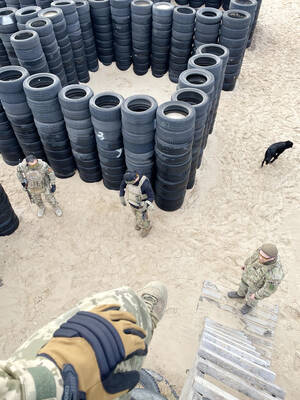
Even by the standards of Ukraine’s International Legion, which comprises volunteers from over 55 countries, Han has an unusual backstory. Born in Taichung, he grew up in Costa Rica — then one of Taiwan’s diplomatic allies — where a relative worked for the embassy. After attending an American international high school in San Jose, Costa Rica’s capital, Han — who prefers to use only his given name for OPSEC (operations security) reasons — moved to the US in his teens. He attended Penn State University before returning to Taiwan to work in the semiconductor industry in Kaohsiung, where he
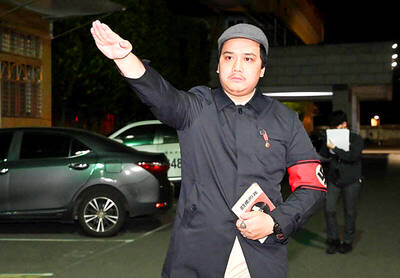
On May 2, Chinese Nationalist Party (KMT) Chairman Eric Chu (朱立倫), at a meeting in support of Taipei city councilors at party headquarters, compared President William Lai (賴清德) to Hitler. Chu claimed that unlike any other democracy worldwide in history, no other leader was rooting out opposing parties like Lai and the Democratic Progressive Party (DPP). That his statements are wildly inaccurate was not the point. It was a rallying cry, not a history lesson. This was intentional to provoke the international diplomatic community into a response, which was promptly provided. Both the German and Israeli offices issued statements on Facebook
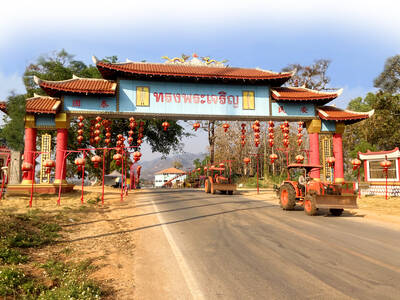
Perched on Thailand’s border with Myanmar, Arunothai is a dusty crossroads town, a nowheresville that could be the setting of some Southeast Asian spaghetti Western. Its main street is the final, dead-end section of the two-lane highway from Chiang Mai, Thailand’s second largest city 120kms south, and the heart of the kingdom’s mountainous north. At the town boundary, a Chinese-style arch capped with dragons also bears Thai script declaring fealty to Bangkok’s royal family: “Long live the King!” Further on, Chinese lanterns line the main street, and on the hillsides, courtyard homes sit among warrens of narrow, winding alleyways and